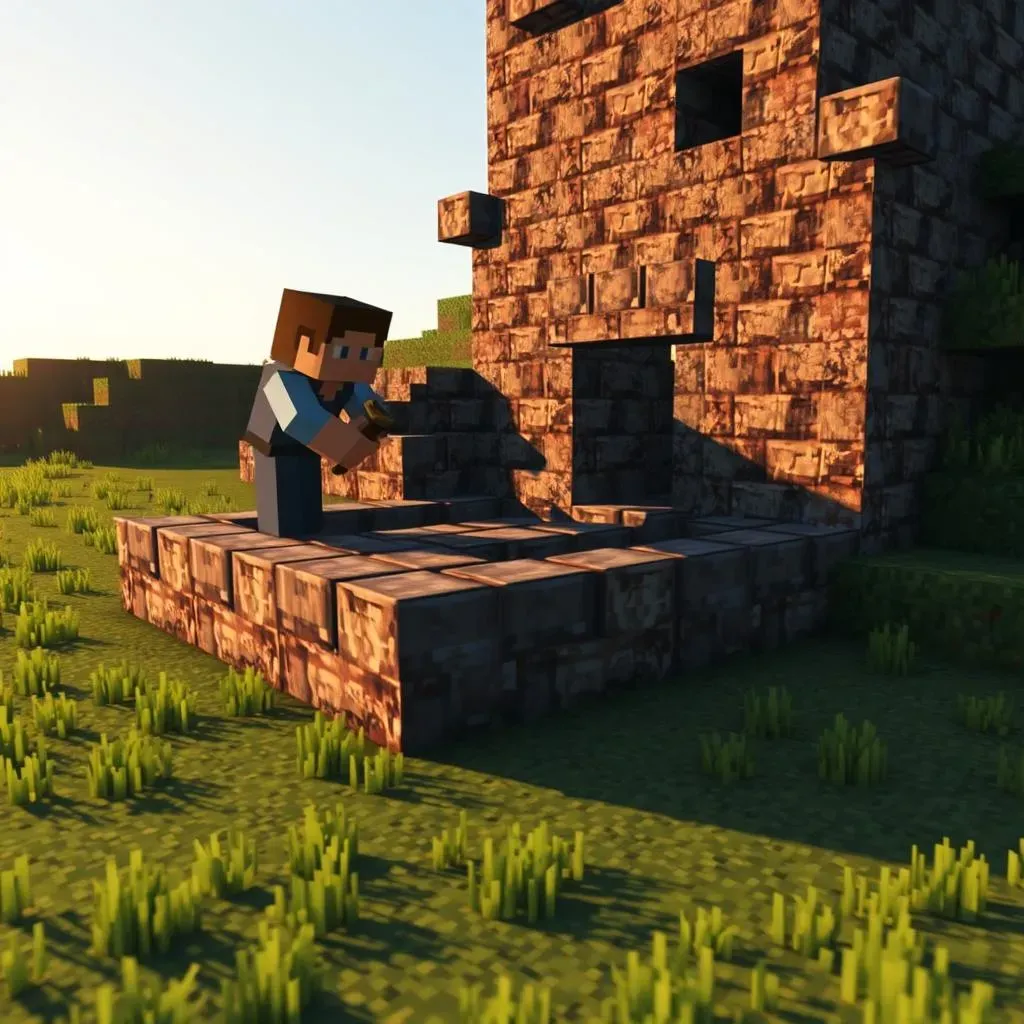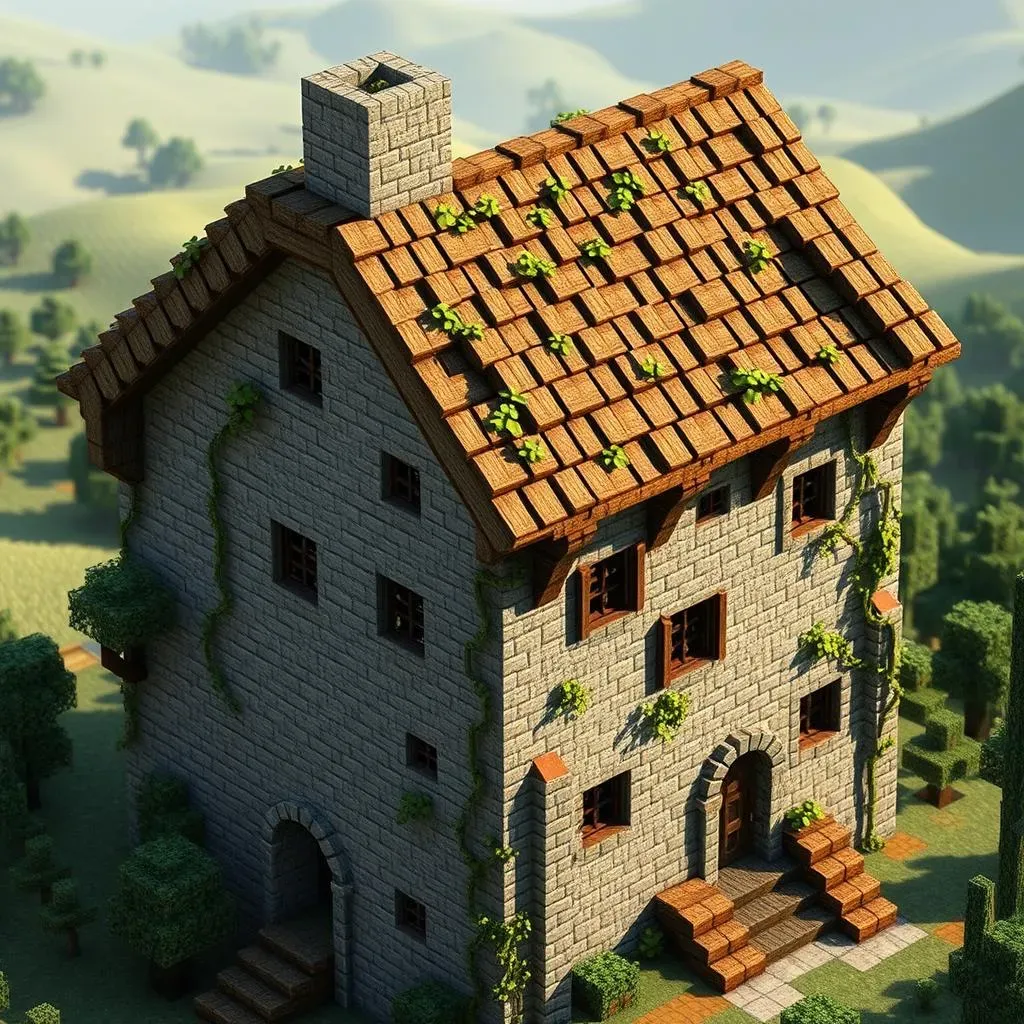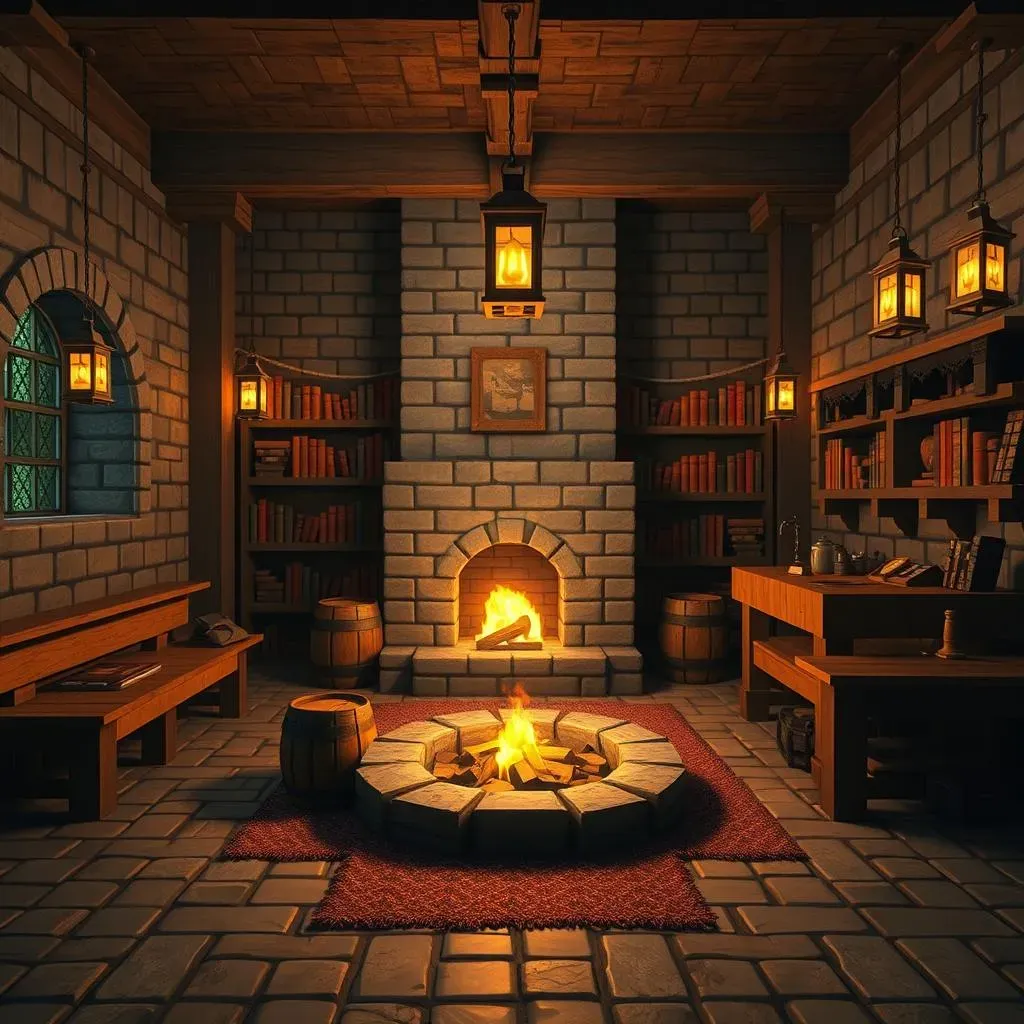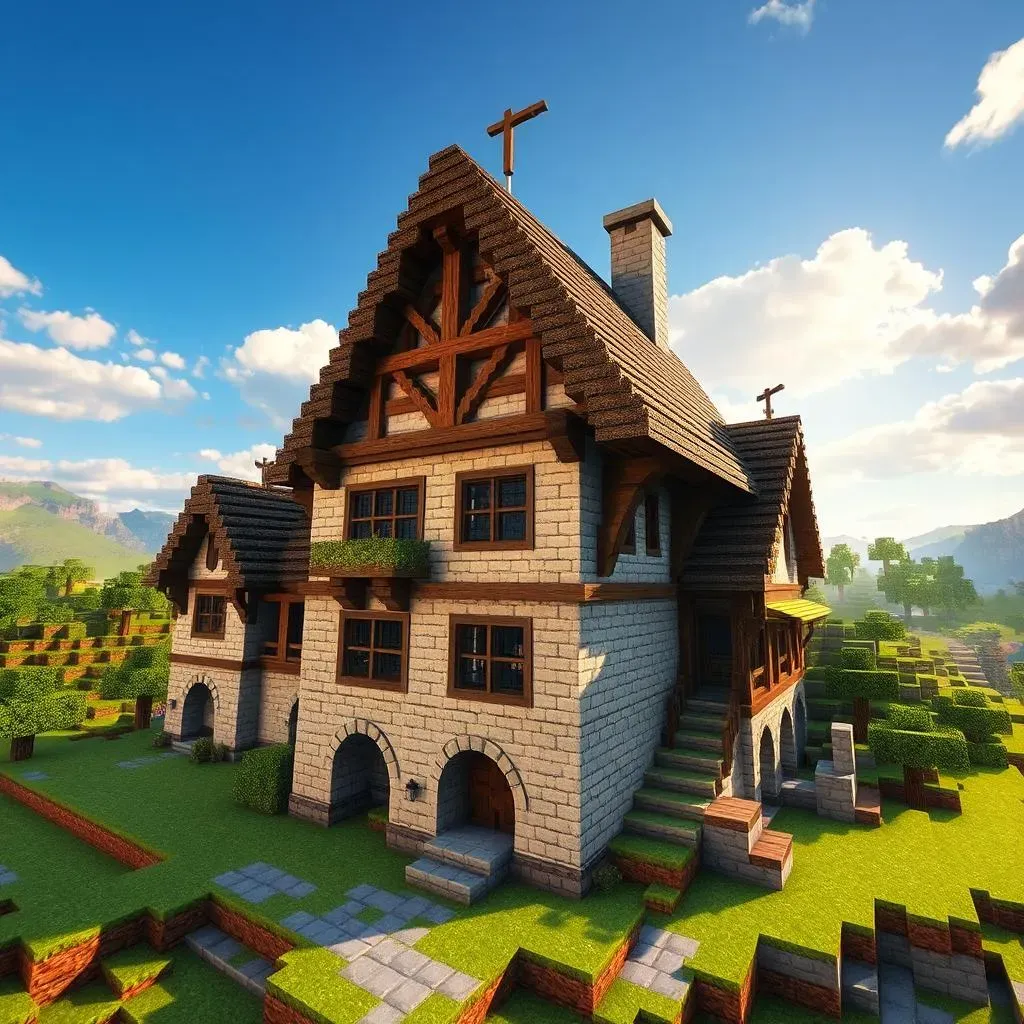Table of Contents
Ever dreamt of ruling your own medieval kingdom in Minecraft? Forget modern boxes, let's journey back in time and construct a magnificent medieval Minecraft house. This guide will walk you through building a medieval minecraft house in creative mode, perfect for players who love to build without limits. Ready to trade your diamond pickaxe for a cobblestone hammer? We'll start with gathering essential materials, then lay a solid foundation. Next, we'll raise sturdy walls and craft a classic medieval roof. Finally, we'll dive into the fun part: detailing and decorating your new креативный (creative) medieval abode. Get ready to build a medieval masterpiece that would make any villager envious!
Essential Materials for Building a Medieval Minecraft House in Creative

Essential Materials for Building a Medieval Minecraft House in Creative
Gathering Your Medieval Arsenal
Alright, so you're diving into building a medieval Minecraft house in creative? Awesome choice! First things first, let's talk materials. Creative mode is all about unlimited resources, which means you've got the whole blocky world at your fingertips. But to nail that authentic medieval vibe, you gotta pick the right blocks. Think sturdy, think rustic, think like you're building a castle that's gonna last centuries (even if it's just until your next Creeper mishap).
Forget your fancy netherite and polished deepslate for this project. We're going old school. Cobblestone is your best friend here – it's the backbone of any good medieval build. Oak wood is another must-have for beams, frames, and that classic dark wood look. And for the roof? Spruce wood planks or stairs are perfect for that sloped, cozy feel. Don't worry, we'll break down specific blocks as we go, but these are your core ingredients for a truly epic medieval Minecraft house.
Material Category | Essential Blocks | Why They're Medieval-tastic |
|---|---|---|
Stone | Cobblestone, Stone Bricks, Andesite | Classic medieval building blocks, sturdy and textured |
Wood | Oak Wood, Spruce Wood, Dark Oak Wood | Frames, beams, roofs, and warm accents |
Roofing | Spruce Wood Stairs, Cobblestone Stairs, Stone Brick Stairs | Sloped roofs are a medieval staple |
Details | Hay Bales, Lanterns, Barrels, Flower Pots | Adds character and charm, makes it feel lived-in |
Stockpiling for Success: No Mining Required!
Since we're in creative, mining is totally off the table (unless you really dig that sort of thing for fun). Instead, hit up your inventory and get ready to stockpile. Seriously, grab stacks and stacks of cobblestone, oak logs, spruce planks – you can never have too much! Think of it like preparing for a real medieval building project, except way faster and without the backache. Having a good stockpile ready to go means you can focus on the fun part: actually building your masterpiece without constantly pausing to grab more blocks.
Pro tip: Use your hotbar wisely! Load it up with your most frequently used blocks – cobblestone, oak logs, spruce planks, stairs, glass panes – whatever you know you'll be reaching for constantly. This speeds up your building process like crazy and keeps you in the creative flow. Trust me, nothing breaks the immersion of building a medieval castle faster than having to constantly open your inventory to find that one block you need. Get organized, get stocked, and get building!
Laying the Foundation: StepbyStep Guide to Building Your Medieval Minecraft House

Laying the Foundation: StepbyStep Guide to Building Your Medieval Minecraft House
Why Foundations Matter: More Than Just Dirt!
let's get down to the nitty-gritty: laying the foundation for your medieval Minecraft house. Think of it like this, even in the blocky world of Minecraft, you can't just slap walls on thin air and expect a majestic castle, right? A solid foundation is key, not just for looks, but for giving your build structure and a sense of permanence. Plus, a well-defined foundation instantly makes your medieval house look more intentional and less like a random shack that blew in with the pixelated wind.
For building a medieval Minecraft house, especially in creative mode where you have all the freedom in the world, a good foundation sets the stage for everything else. It defines the shape and size of your house, it grounds it in the landscape, and it makes the whole building process smoother. Trust me, spending a little time on a proper foundation will save you headaches (and block-aches?) later on. So, ditch the dirt, and let's build something solid!
- Purpose of a Foundation: Provides structure and stability.
- Aesthetics: Defines the house's footprint and visual grounding.
- Building Efficiency: Makes subsequent building steps easier and more organized.
Foundation 101: A Simple Step-by-Step
Alright, ready to get your hands dirty (virtually, of course)? Laying the foundation for your medieval Minecraft house doesn't have to be rocket science. Let's break it down into super easy steps. First, pick your spot. Find a nice, relatively flat area – medieval houses weren't exactly built on mountainsides (unless you're going for a super dramatic mountain fortress, which, hey, go for it!). Once you've got your location, decide on the size and shape of your house. A rectangle or square is classic medieval, but feel free to get a little creative – just keep it manageable for your first build.
Next, grab your cobblestone (or stone bricks, or whatever foundation block you fancy). Outline the perimeter of your house on the ground. This is your foundation footprint. Then, dig down one block deep within that outline. Yep, just one block! We're not building a bunker here, just a solid base. Fill that trench with your chosen foundation block, bringing it back up to ground level. Boom! Foundation laid. See? Easy peasy. Now you've got a clear platform to start building your walls on, and your medieval Minecraft house is already taking shape.
Step | Action | Materials |
|---|---|---|
1 | Choose Location | Flat terrain preferred |
2 | Outline Perimeter | None |
3 | Dig Down 1 Block | Shovel (optional in creative) |
4 | Fill with Foundation Blocks | Cobblestone, Stone Bricks, etc. |
Shape and Size Savvy: Medieval Foundation Flair
Let's talk a bit more about foundation shape and size when building a medieval Minecraft house. Medieval houses weren't sprawling mansions (usually), so think cozy and compact. A foundation that's around 10x12 or 12x15 blocks is a good starting point for a nice, manageable medieval house. Shape-wise, rectangles and squares are your friends. They're simple, they look authentic, and they're easy to build on. You can always add extensions or wings later if you want to expand your medieval estate.
Consider adding a slight overhang to your foundation – that is, make the foundation blocks stick out by one block beyond your walls. This little detail adds a ton of visual interest and makes your house look more grounded and substantial. It's a classic medieval building technique, and it translates beautifully into Minecraft. Experiment with different foundation shapes and sizes, but remember to keep it proportional to the overall scale you're aiming for. A giant foundation for a tiny house will look a bit… off. So, keep it balanced, keep it medieval, and keep on building!
Constructing Walls and Roof: Key Techniques for a Medieval Style Minecraft House

Constructing Walls and Roof: Key Techniques for a Medieval Style Minecraft House
Raising the Walls: Medieval Style and Block Combos
Alright, foundation's down, time to get vertical! When it comes to walls for your medieval Minecraft house, ditch the flat, boring slabs. Medieval walls had texture, depth, and weren't afraid to mix things up. Think cobblestone bases topped with stone bricks, or perhaps some rough-hewn andesite thrown in for good measure. Don't be afraid to experiment with different block combinations to get that rugged, aged look. Seriously, a wall that's just one solid color of stone? So last century (literally!).
Consider using logs as vertical supports or cornerstones – oak logs stripped or unstripped add a fantastic timber frame vibe to your walls. And windows? Keep them smaller and strategically placed, not massive glass panels like you're building a modern condo. Medieval windows were functional, not for showing off your panoramic views (unless your panoramic view was of your potato farm, which, fair enough). Think narrow slits or small, multi-paned windows using glass panes or even iron bars for a more fortified look. Let's make these walls tell a story, not just hold up a roof!
Roofing Right: Slopes, Materials, and Medieval Charm
Now for the crowning glory – the roof! A properly built roof is what really screams "medieval Minecraft house." Forget flat roofs, unless you're going for a super specific, and slightly odd, medieval flat-roofed dwelling. We're talking sloped roofs, baby! Steeply pitched roofs were a staple of medieval architecture, shedding rain and snow like a boss. Spruce wood stairs are your go-to for achieving that classic sloped roof. They're the perfect blocky shingles.
Don't just slap on a single layer of stairs though. Add depth by layering them, maybe overhang the eaves a bit, or even incorporate different materials like cobblestone stairs for accents or to break up the monotony of wood. Think about adding a chimney too! A cobblestone chimney jutting out from your roof instantly adds character and that cozy, hearth-and-home feel. Roofing might seem tedious, but trust me, nailing that medieval roofline is key to making your build pop. Let's get those slopes looking sharp!
Wall Style | Block Combinations | Roof Style | Material Suggestions |
|---|---|---|---|
Textured Stone | Cobblestone base + Stone Bricks + Andesite accents | Steeply Sloped | Spruce Wood Stairs, Cobblestone Stairs for trim |
Timber Frame | Oak Log corners/supports + Cobblestone/Plank infill | Gabled Roof | Spruce Wood Stairs, Dark Oak Wood Stairs for contrast |
Fortified Stone | Stone Bricks + Stone Brick Stairs for detailing + minimal windows | Turret Roof | Stone Brick Stairs, Cobblestone for texture |
Adding Flair: Details and Variations for Walls & Roofs
Want to take your walls and roofs from "meh" to "medieval magnificent"? Details are your secret weapon. Think about adding little touches like trapdoors as window shutters, or vines creeping up your walls for an aged, overgrown look. Stone buttons or slabs can act as subtle wall trim or decorative accents. And don't underestimate the power of varying wall heights! Medieval buildings weren't perfectly symmetrical boxes. Adding a slightly taller section or a small tower can break up the straight lines and make your house way more visually interesting.
For roofs, consider adding dormers – those little windowed projections that pop out of the roof slope. They add light and charm to attic spaces and are super medieval-esque. Experiment with different roof shapes too! Gabled roofs are classic, but hipped roofs, or even small conical roofs on towers, can add variety. Remember, building a medieval Minecraft house in creative is all about having fun and letting your imagination run wild. So, don't be afraid to get detailed, get creative, and build a medieval masterpiece that's uniquely yours!
Detailing and Decorating Your Creative Medieval Minecraft House

Detailing and Decorating Your Creative Medieval Minecraft House
Medieval Interiors: Warmth and Functionality First
Walls and roofs are up, congrats! But a bare stone box isn't exactly a cozy medieval home, is it? Now comes the fun part: detailing and decorating your creative medieval Minecraft house! Think less IKEA showroom, more rustic tavern meets cozy castle. Medieval interiors were all about warmth, practicality, and a touch of handcrafted charm. Forget open-concept minimalism; we're going for rooms with purpose, nooks and crannies, and a lived-in feel that screams "dwarf blacksmith lives here" (even if it's just you).
Start with flooring. Stone and wood are your go-tos. Stone brick floors in main areas give that castle vibe, while wooden planks in bedrooms or living spaces add warmth. Don't be afraid to mix and match! A stone brick path leading to a wooden-floored room? Medieval perfection. Lighting is key too. Torches are classic medieval, but lanterns offer a bit more elegance. Hang them from walls, ceilings, or place them on tables to cast a warm, flickering glow. And carpets! Simple wool carpets in muted colors can soften up those stone floors and add a touch of medieval luxury (think "luxury" by medieval peasant standards, not Beverly Hills).
Furniture and Fixtures: Crafting Your Medieval Comforts
Medieval furniture wasn't mass-produced particleboard from a flatpack. It was sturdy, functional, and often handcrafted. In Minecraft, that means embracing wood and simple shapes. Crafting tables become workbenches, barrels become storage, and simple wooden stools or benches serve as seating. For beds, keep it rustic – a simple wooden bed frame with wool blankets is perfect. No need for king-size waterbeds in your medieval abode!
Don't forget functional details! A fireplace is a must-have for any medieval home. Build a stone hearth with a chimney (remember those roof chimneys we talked about?) and use campfires or netherrack with flint and steel for a flickering flame. Bookshelves filled with books (even if they're just decorative in creative) add a touch of scholarly charm. And barrels! Barrels everywhere! Medieval folks stored everything in barrels – food, ale, questionable potions – so load up on them for storage and decoration. These little touches bring your medieval Minecraft house to life and make it feel like a real home, not just a blocky shell.
Detail | Minecraft Block/Item | Medieval Vibe |
|---|---|---|
Flooring | Stone Bricks, Wood Planks, Cobblestone Paths | Sturdy, Warm, Rustic |
Lighting | Torches, Lanterns, Campfires | Flickering, Warm, Atmospheric |
Furniture | Crafting Tables, Barrels, Wooden Benches, Simple Beds | Functional, Handcrafted, Sturdy |
Decoration | Bookshelves, Flower Pots, Item Frames, Banners | Personalized, Charming, Lived-in |
Exterior Flourishes: Landscaping and Medieval Charm
Interior looking good? Awesome! But don't forget the outside! Detailing and decorating your creative medieval Minecraft house extends beyond the walls. Landscaping is key to making your build blend into the environment and look truly medieval. Think cobblestone paths leading to your door, maybe a small well or fountain in the courtyard. Plant some trees and bushes around your house – oak saplings, spruce saplings, even berry bushes add greenery and life.
Consider adding small gardens with wheat, carrots, or potatoes – essential medieval crops! Hay bales scattered around add a rustic, farm-like touch. And don't forget those exterior details on the house itself! Window boxes with flowers, vines climbing up walls (use vines or even green wool blocks), and banners hanging from windows or balconies all add personality and medieval flair. Remember, building a medieval Minecraft house in creative is about creating a whole atmosphere, inside and out. So get landscaping, get detailing, and make your medieval dream house a blocky reality!
Your Medieval Minecraft House Awaits!
From humble beginnings with oak logs and cobblestone, you've now got the skills to bring a magnificent medieval Minecraft house to life in creative mode. Imagine the possibilities! Whether you stick to our guide or branch out with your own креативный (creative) flair, remember the core techniques: solid foundations, sturdy walls, and those signature medieval roofs. Now, go forth and build a medieval Minecraft house that's not just a home, but a testament to your block-building prowess!
